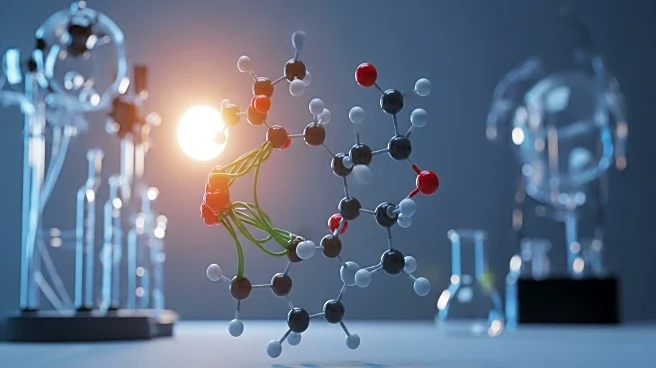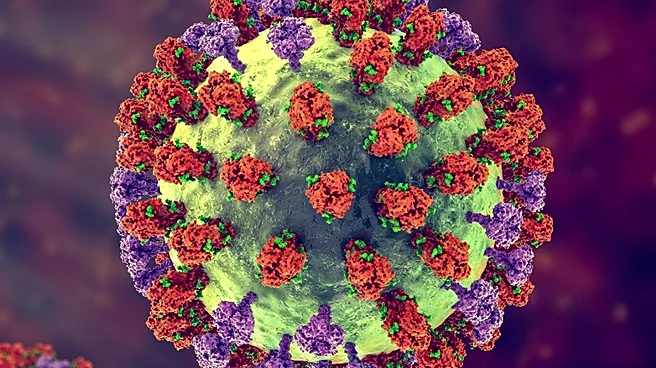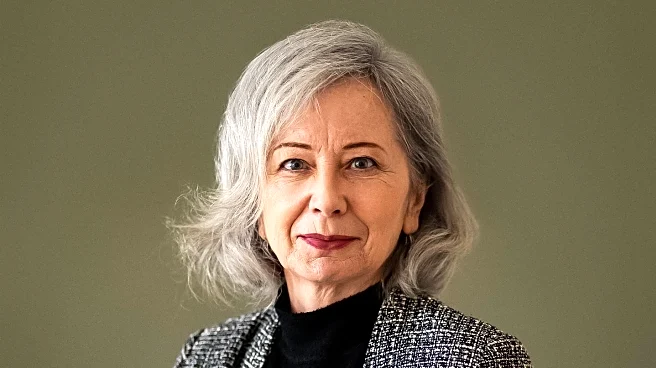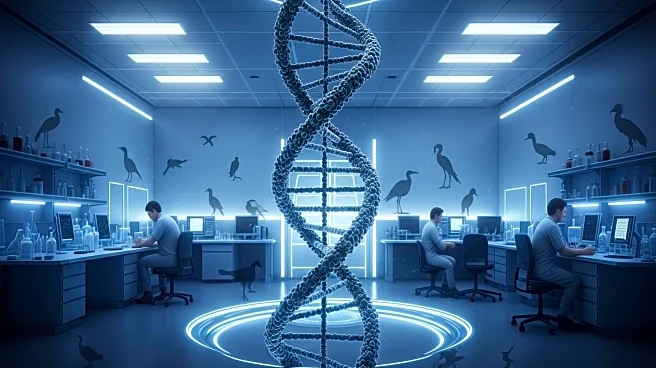What is the story about?
What's Happening?
An international research team led by chemist Shikha Dhiman, PhD, from Johannes Gutenberg University Mainz, has made significant findings regarding the interaction between stem cells and matrix materials in tissue engineering. Using super-resolution microscopy, the team discovered that the speed at which binding partner molecules move is as crucial as the strength of the interaction for successful binding. This insight challenges the previous assumption that strong binding alone was sufficient for stem cells to adhere to host materials. The study, published in PNAS, highlights the importance of molecular dynamics in the initial recognition between biomaterial ligands and cell membrane receptors, which is essential for optimizing biomaterials used in medical applications.
Why It's Important?
The findings have profound implications for the field of tissue engineering and regenerative medicine. Understanding the dynamics of ligand-receptor interactions can lead to the development of more effective biomaterials, potentially improving outcomes in wound healing, transplants, and other medical applications. This research could also impact drug delivery systems, where precise interaction between active ingredients and target sites is crucial. By focusing on the speed of molecular movement, researchers can design materials that better mimic natural biological processes, enhancing the integration and functionality of medical implants and therapies.
What's Next?
The research opens new avenues for the design of next-generation bioactive materials. Future studies may explore how these findings can be applied to develop advanced medical implants and improve drug delivery systems. Researchers might also investigate the potential for these insights to contribute to breakthroughs in tissue repair and regenerative medicine. As the understanding of molecular dynamics in biomaterials deepens, collaborations between chemists, biologists, and medical professionals could accelerate the translation of these findings into clinical applications.
Beyond the Headlines
This research underscores the importance of interdisciplinary approaches in solving complex biomedical challenges. The integration of chemistry, biology, and medical science is crucial for advancing tissue engineering and regenerative medicine. Additionally, the study highlights the role of basic research in uncovering fundamental principles that can lead to innovative solutions in healthcare. As the field progresses, ethical considerations regarding the use of engineered tissues and implants will become increasingly important, necessitating ongoing dialogue between scientists, ethicists, and policymakers.
AI Generated Content
Do you find this article useful?













